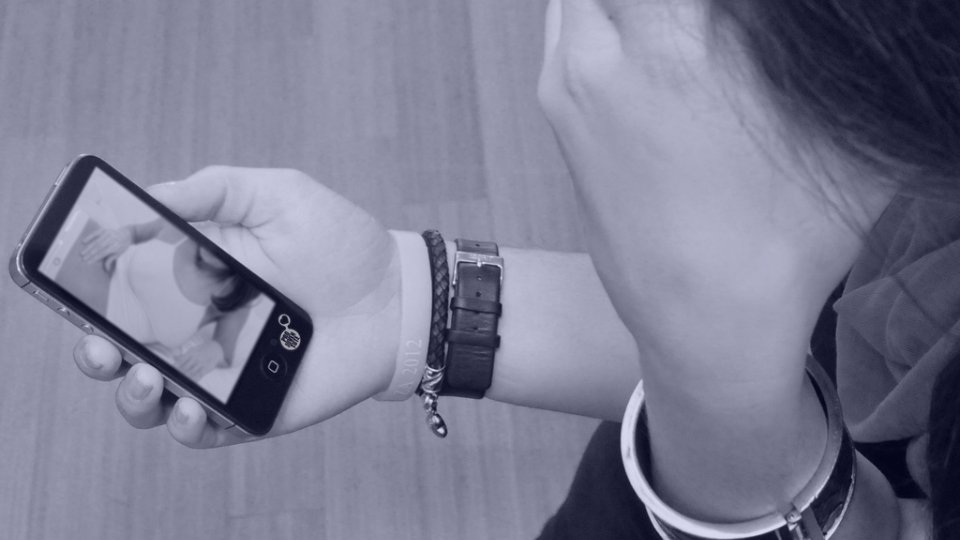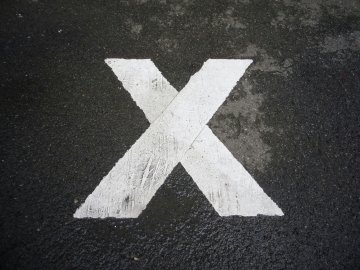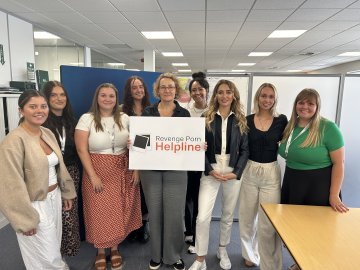You could be forgiven for thinking RP* and sexting (by sexting I am referring to the peer to peer sharing of intimate images) are the same thing, they are similar.. It’s the same behaviour of sharing someone’s intimate images without consent. But they are different especially when we are talking about child online safety and in this article I will try to explain why.
It was recently reported in the news that “Children as young as 11 are revenge porn victims.” and within a journalistic investigation it was found that through a FOI request of the 43 forces, 38 responded with 2,130 cases of revenge porn, with one in six involving under-18s. This is not the first time the media have got it wrong, so I think it’s time we make this very clear…
Revenge Porn involving Children?
Firstly let’s talk about the law, the statistic above about 1 in 6 revenge porn cases involving a child is obviously worrying but also a little puzzling, given that a child cannot be charged with RP if they are sharing an image of themselves or anyone’s else under the age of 18, as it was being reported as peer on peer abuse. Confused? What the child would actually be charged with is “sharing an indecent image of a minor” a far more serious crime that carries a heavier sentence.
Since “sexting” has become more prevalent it has been recognised by the National Crime Agency that criminalising a child in this way is very heavy handed and in turn may have a negative impact on that child’s life. Consequently they have created an outcome code for police to use (21) which means they can record the crime without the child(ren) having a criminal record. Let it also be said, sexting doesn’t always go wrong, we only hear about it when it does!
A child can be charged with RP if they share any images of someone over the age of 18, however the specific report in the media this week was about peer on peer sexual abuse; kids doing it to each other and that’s not Revenge porn, so what are they reporting? Either the stats are wrong or the police are charging children incorrectly, either way we have quite a big issue on our hands and that leads me to my second point..
Getting the right language
..Language! Why do we not use the term “child pornography” anymore? Because pornography is something we are meant to enjoy, it’s a visual (sometimes artistic) form of our human sexuality, although it is seen by many as rude or dirty it is still something enjoyed by the majority of adults whether that be in pictures, films or writings. If porn is a guilty pleasure, it’s still a pleasure.
Using the term porn to describe a picture of a child is wrong and I thought we were past that. Porn makes it sound sexy, salacious, something to want and by using the term “porn” we are only adding to the early sexualisation of our children. It has since been agreed that “Child Sexual Abuse Imagery” is a far more appropriate way to identify these images.
(A lot of Revenge Porn victims also feel that the use of the word porn in this context is wrong, as they have not consented to this, how can it be classed as porn? I completely understand this and will get to that point shortly.)
What crime are we reporting?
Sharing an indecent image of a child is illegal even if you are the child in the image, and a child in this context is anyone under the age of 18. Just so things are as clear as mud, you are legally allowed to have sexual intercourse at the age of 16, so a 16 year old can have sex but if they take and distribute a picture they’re committing a crime. This is where the confusion comes and where we have got it wrong, 16 and 17 year olds are being charged with RP because it feels wrong to charge them with the far more serious crime of sharing child sexual abuse imagery. But then that trickles down and before you know it you’ve got 11 year olds accused of being a “sex offender” and charged with revenge porn.
What we have are; teachers worried that the children in their class will be criminalised for sharing intimate image’s, police knowing they need to record the crime but not sure what to crime it as and what the implications may be and parents who are trying to encourage their children to have healthy sexual relationships, at the same time knowing they may be arrested for doing something that seems quite natural these days. To top it all off we have a media beast in this country willing to sensationalise and dramatize every “sexting” incident they hear of, picking stats out the bin and focusing solely on the “sexy” stories. Let me tell you now, there is nothing sexy or exciting about any sexting or revenge porn incidents, these are people’s lives and I think I can speak for everyone on the helplines when I say, it’s just depressing and distressing!
Lets keep it simple
So let’s try to keep it really simple and stick to the established laws and guidance;
Revenge Porn
an adult issue can be defined as: The non-consensual sharing of intimate images of anyone over the age of 18.
Sexting
Ok slightly more confusing as it can also be enjoyed by adults, and often is. In the context of child online safety sexting is peer to peer sharing of intimate images of anyone under the age of 18 with someone of the same or similar age.
Disclaimer: I actually dislike both the terms, but I’m not going to sit here and try to redefine the wheel, one thing at a time hey!
If you need some help, or want to talk more about revenge porn please call our RP helpline on 0845 6000 459 or visit the Revenge Porn Helpline
If you are dealing with a sexting incident and need some guidance you can check out our sexting guidance here, or call the Professionals Online Safety helpline on 0844 381 4772.






